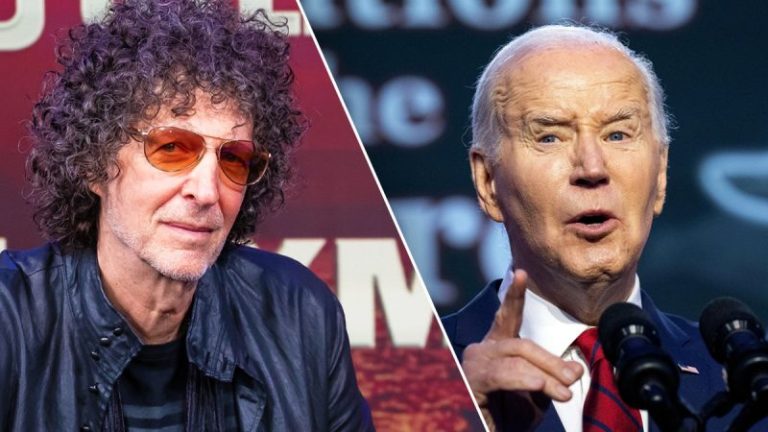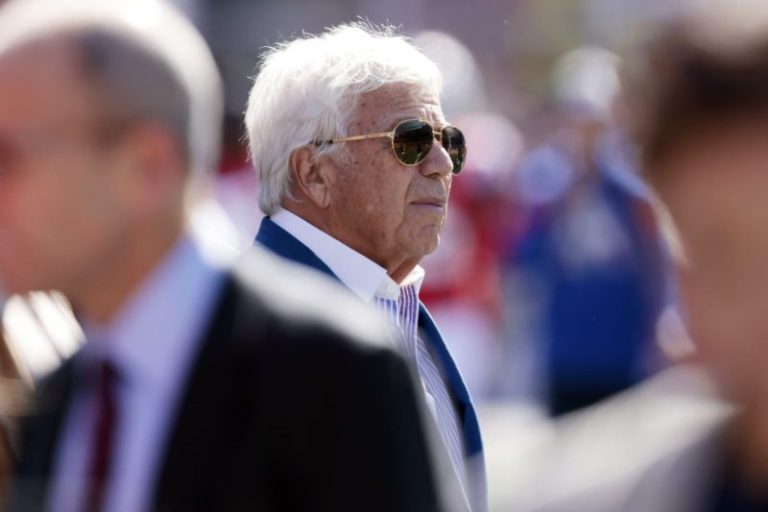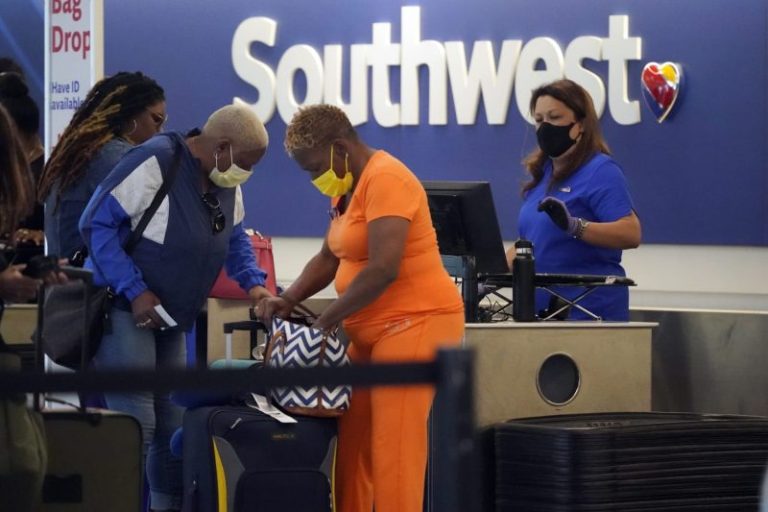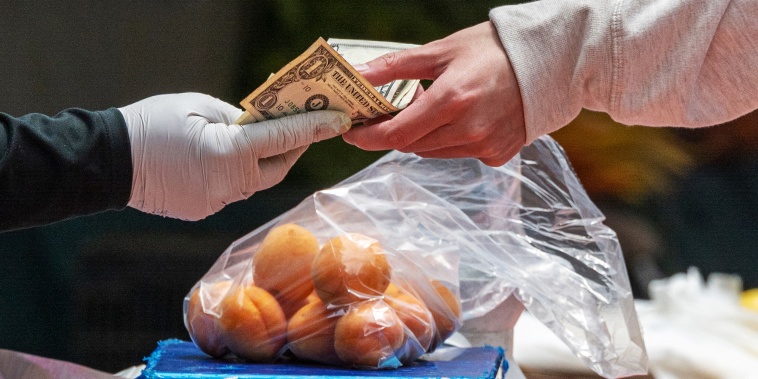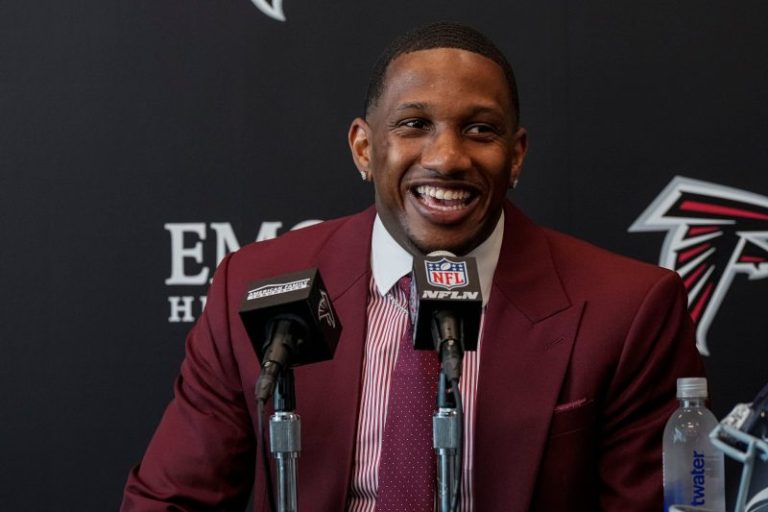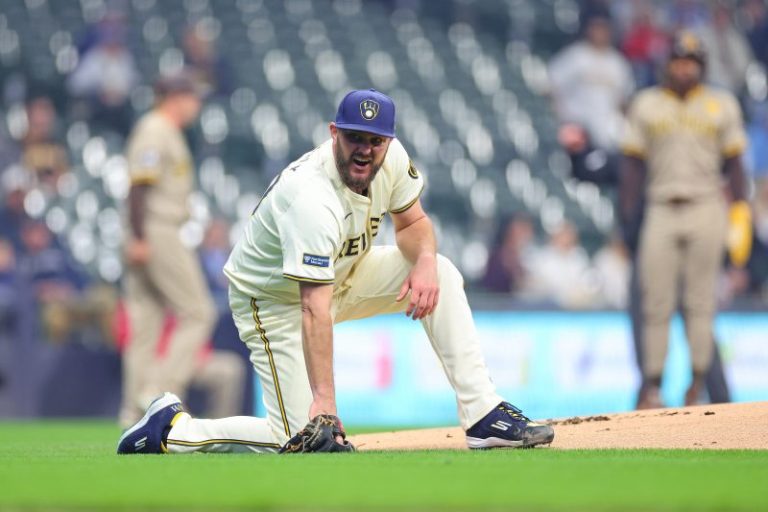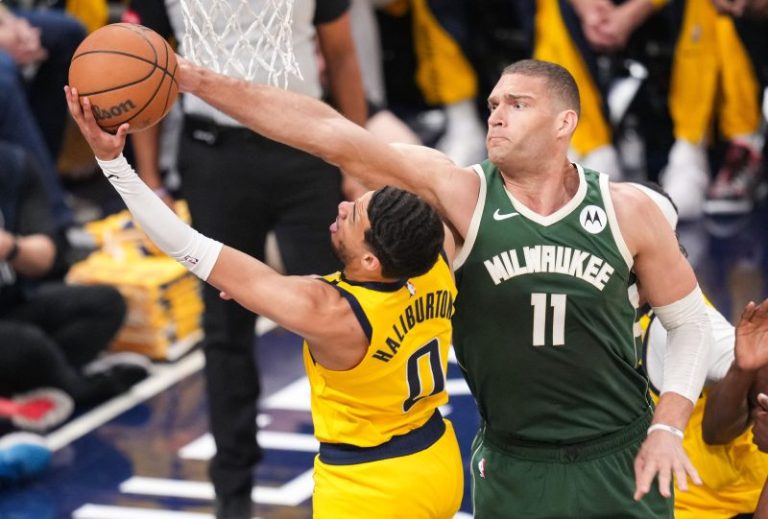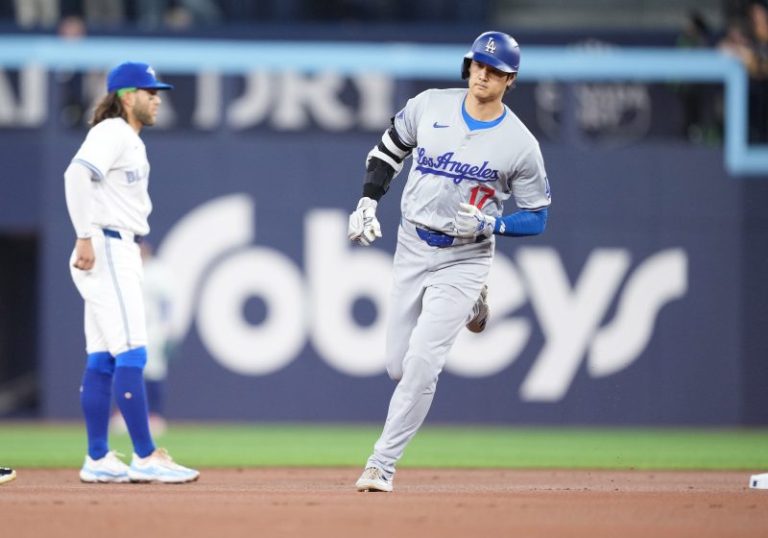President Biden faced a wave of criticism on Friday — from media outlets and commentators — for stretching the truth during a rare live interview with radio host Howard Stern.
During his interview with Stern, Biden spoke about an array of subjects, including a debate with former President Donald Trump ahead of the 2024 election and the time he ‘got arrested’ as a teenager at a Delaware desegregation protest.
Some of the claims made by the president during the hour-long interview, however, faced scrutiny from the national media and certain individuals in the political realm who have become accustomed to Biden’s habit of straying from the truth.
As he has done in the past, Biden recounted during his interview with Stern what his mother had supposedly told him about accepting then-Sen. Barack Obama’s invitation to serve as his running mate in the 2008 presidential election.
Biden recounted: ‘She said, ‘Remember when they were desegregating Lynnfield, the neighborhood … suburbia — and I told you — and there was a Black family moving in and there was — people were down there protesting; I told you not to go down there, and you went down, remember that? And you got arrested standing on the porch with a Black family? And they brought you back, the police?’ And I said, ‘Yeah, Mom, I remember that.’’
The New York Times, which took aim at President Biden on Thursday for ‘actively and effectively’ avoiding journalists’ questions during his first term in office, reported Friday that Biden ‘appeared to once again stretch the truth about being arrested at a Delaware desegregation protest as a teenager.’
‘There is no evidence that he was ever arrested at a civil-rights protest,’ the Times added.
CNN also piled on Biden’s claim, noting in a fact check that there is ‘no evidence Biden ever got arrested during a civil rights protest, as the Washington Post and PolitiFact found when they looked into this claim in 2022 – and Biden has at least twice told the story of his supposed presence at this particular Delaware protest without mentioning any arrest, instead claiming that the police merely took him home that day.’
Biden also faced criticism from CNN earlier this week after he ‘revived a debunked tale about his past — his fictional claim that he used to drive an 18-wheeler truck,’ during a campaign event in Florida this week.
Fact-checking the president’s claim, CNN wrote: ‘Biden has repeatedly embellished or invented biographical tidbits. In 2021, he claimed during a tour of a Mack Trucks facility: ‘I used to drive an 18-wheeler, man,’ then added, ‘I got to.’ At a separate 2021 event, he told college students studying truck technology, ‘I used to drive a tractor-trailer,’ adding, ‘I only did it for part of a summer, but I got my license anyway.”
‘Biden’s claim remains untrue. There is no evidence he ever drove an 18-wheeler,’ the outlet added of his Tuesday remarks.
Biden also faced backlash for embellishing the truth from individuals on social media, including Greg Price, a popular conservative X user and the communications director for the State Freedom Caucus Network.
Price noted a number of questionable remarks made by Biden during his interview with Stern that he believes are ‘lies,’ including a tale he told about saving ‘half a dozen’ lives during his past tenure as a lifeguard and the arrest he suffered amid civil rights protests when he was a teenager.
Another suspected ‘lie’ was Biden’s claim that he was ‘runner-up in state scoring’ in football during his high school years.
Price’s post on social media also referenced a claim made by Biden about receiving ‘salacious pictures’ from women in the 1970s during his time as a senator, which he gave to the Secret Service.
‘I got put in that ten most eligible bachelors list … and a lot of lovely women… would send very salacious pictures, and I’d just give them to the Secret Service. I thought somebody would think I was —,’ Biden told Stern before shifting topics.
It’s unclear how the Secret Service would have been involved. Senators do not receive Secret Service protection, and Biden didn’t receive Secret Service protection until 2008, when he was elected vice president.
Others also took aim at the president for his remarks on Stern’s show.
‘Another day, another Biden lie … at least no one got eaten by cannibals in this one,’ conservative commentator Rita Panahi wrote in a post on X.
Fox News’ Jeanine Pirro, co-host of ‘The Five,’ also weighed in on Biden’s ‘lies,’ questioning Friday how Biden can debate if ‘he can’t even keep his lies straight.’
Earlier this month, during a visit to a war memorial near his hometown in Pennsylvania, Biden faced criticism for appearing to imply that his uncle was eaten by cannibals after his plane was shot down during World War II.
‘He flew single-engine planes, reconnaissance flights over New Guinea. He had volunteered because someone couldn’t make it. He got shot down in an area where there were a lot of cannibals in New Guinea at the time,’ Biden said at the time. ‘They never recovered his body.’
White House press secretary Karine Jean-Pierre later acknowledged that Biden’s maternal uncle, Ambrose Finnegan, whom he refers to as ‘Uncle Bosie,’ did die in WWII when his plane crashed into the Pacific Ocean, but confirmed he was not eaten by cannibals, as Biden seemed to suggest on two separate occasions during his visit to the state.

